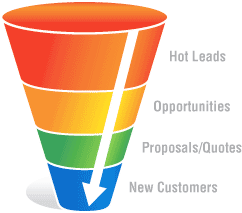 Have you ever found it difficult to find a document someone sent you a while ago? Maybe it was important, you cant remember where you filed it. You can search your computer, your usb drives, your online storage provider, even your mobile phone. Tags make it easier and there are always some plug-ins that promise to make it easier. None of them work very well.
Have you ever found it difficult to find a document someone sent you a while ago? Maybe it was important, you cant remember where you filed it. You can search your computer, your usb drives, your online storage provider, even your mobile phone. Tags make it easier and there are always some plug-ins that promise to make it easier. None of them work very well.
Why can’t your stuff just go where it should be? I use Box.net as my content management system for Openera. My wife and I use Dropbox for my personal stuff. Why can’t the files my co-workers send me go where I store my work stuff and my personal files go where my personal stuff goes?
That is the question I have asked myself lately in the hopes of answering another vexing problem facing just about all content management systems: user adoption. The number 1 reason new IT initiatives fail is lack of user adoption. This is true of just about any new application but amplified for any system that relies on user input (content in the form of data, documents, videos, photos…etc.) like content management (CMS) and customer relationship management systems. (CRM) The systems are only valuable if users contribute, if they don’t the system falls prey to diminishing returns. The less people contribute, the less people trust the relevance of the content.
To take this question to the next level I began thinking about the reasons these systems fail when adoption fails. It comes down to the way people work. Google is a success because people trust that they can quickly and easily search and find relevant content online. Outside of the SEO world, people don’t really think about putting content “into Google.” Results end up “in Google” by the nature of what people do online, without having to do anything different. Just by writing a blog entry, updating facebook, tweeting a review of a great restaurant, posting pictures to Flickr or videos to YouTube, value is added to Google searches. The same is not true of traditional ECM (Open Text, Documentum, Vignette…) or CRM solutions. ( Salesforce.com, Microsoft Dynamics, Oracle OnDemand, Siebel) Users are asked to change their behaviour. They have to check-in a document, save files to specific locations, or bcc: catch-all email inboxes.
I’ve been a part of the structured and unstructured content management world since 1991. Back then we called it document management, some records management, email management, even knowledge management. The number one challenge was always the same.
User adoption. We always asked users to change the way they worked. We had a killer solution for document management at Interleaf, Open Text, Documentum, Hummingbird and others. But, we asked users to do something different. Don’t email files back and forth. Don’t save documents to shared drives. Check your documents into a document management system and send someone a link to the document. That way we can track who accesses the documents and can provide an audit trail. (Don’t we all love being audited?) It sounded like a great idea, from a technology standpoint it made perfect sense. Less content travelling across the networks led to the better use of bandwidth and resources. Sending links to files instead of the files themselves meant that we could collaborate on the same version of a file. There were so many benefits, why didn’t people just change the way they worked so they could realize all these benefits? I wish I was kidding when I recall my co-workers talking about how stupid people are that email files back and forth and not using our brilliant solution. Well, people aren’t stupid, the technology was great, but it didn’t address user behaviour in the design of the solution.
In short, the preceding challenge is what what I want to focus on as we embark on the development of our solution to this problem. A problem that shouldn’t exist. A problem that should have been solved a decade ago. If computers are so darn smart, why don’t they put my stuff where it’s supposed to go?
 Google makes it easy to find stuff online. Where do you go to find your own stuff? Likely you have to search your laptop, any usb drives you may, or may not have connected at the exact time you are looking for the stuff, you also might need to search your on-line storage (cloud storage like Dropbox, box.net, mozy, idrive or google docs…among many, many others.) But wait! Did you forget to check your smart phone? What about your tablet?
Google makes it easy to find stuff online. Where do you go to find your own stuff? Likely you have to search your laptop, any usb drives you may, or may not have connected at the exact time you are looking for the stuff, you also might need to search your on-line storage (cloud storage like Dropbox, box.net, mozy, idrive or google docs…among many, many others.) But wait! Did you forget to check your smart phone? What about your tablet?

